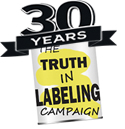The perfect poison: free glutamate
Free glutamate is a Jekyll and Hyde amino acid, essential for normal body function when consumed in balance with other amino acids, and a brain killer when consumed in excess of what is needed for normal body function.Consumed in controlled quantities, free glutamate (as distinct from glutamate contained in protein) functions as a neurotransmitter and building block of protein. But when consumed in excess, in quantities greater than needed, it becomes excitotoxic, firing repeatedly and killing its targeted glutamate receptors.
Consumed in any amount, free glutamate triggers glutamate receptors in the mouth and on the tongue, which causes the food consumed with it to have a more robust taste than it would otherwise have.
Since 1968, there have been reports of reactions such as irritable bowel and migraine headache following ingestion of the product called monosodium glutamate, with later recognition that reactions will follow ingestion of any product that contains free glutamate. There are presently more than forty ingredients in addition to monosodium glutamate that contain toxic free glutamate, with none of them labeled to give the consumer a clue to glutamate’s presence (1).
In the 1970s, Olney and others established that immature animals fed large amounts of free glutamate suffered brain damage followed by intractable obesity, behavior disturbances, and/or reproductive disorders including infertility (2).
In 2020, Samuels described how the abnormalities first seen in animals fed free glutamate could be accounted for in humans (3).
From studying the work of neuroscientists, it became evident that three conditions have to be met in order to produce glutamate-induced brain damage: a vulnerable brain (immature or damaged), large amounts of free glutamate (which would cause the glutamate to be excitotoxic), and a way to deliver the excitotoxic glutamate to the vulnerable brain (which in the laboratory was easy to accomplish).
The vulnerable brain in humans is the immature brain of a fetus or newborn, which is never protected by a blood-brain barrier.
Virtually unlimited amounts of free glutamate became available in 1957 when production of free glutamate changed from extraction of glutamate from existing protein to production of free glutamate by bacterial fermentation.
Delivery is accomplished when a pregnant or lactating woman passes free glutamate consumed in processed and ultra-processed food to her fetus (4).
Recognition of free glutamate’s Jekyll and Hyde attributes came in 1968 when Olney, who speculated that the fact that mice treated with monosodium glutamate became grotesquely obese might be a sign of damage to the hypothalamus (the area of the brain that regulates a number of endocrine functions, including weight control), and found that infant laboratory animals given large amounts of free glutamic acid suffered brain damage immediately, and assorted neuroendocrine disorders later in life.
Olney coined the term “excitotoxin” in 1969 to describe the actions of glutamate observed in his laboratory.
References
1. Ingredient names used to hide free glutamate: https://www.truthinlabeling.org/names.html
2. Olney JW. Brain lesions, obesity, and other disturbances in mice treated with monosodium glutamate. Science. 1969 May 9;164(3880):719-21. doi: 10.1126/science.164.3880.719. PMID: 5778021.
3. Samuels A. (2020) Dose dependent toxicity of glutamic acid: a review, International Journal of Food Properties, 23:1, 412-419, DOI: 10.1080/10942912.2020.1733016
4. Samuels, A. The Perfect Poison: The Story That Big Food and Its Friends at the FDA Don't Want You to Know. July 18, 2022. https://www.amazon.com/Perfect-Poison-Story-That-Friends/dp/0988558440

